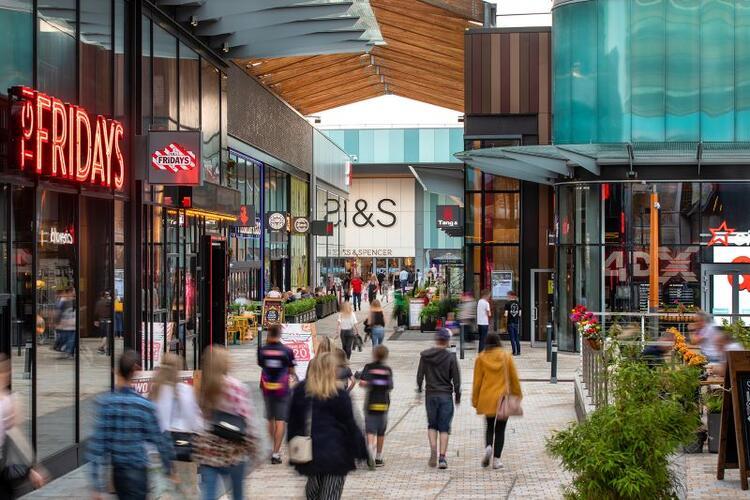Schroder Real Estate Collaborates to Exceed Energy Reduction Target
29 November 2019Schroder Real Estate Collaborates to Exceed Energy Reduction Target
29 November 2019Schroder Real Estate Investment Management (SREIM) has exceeded its 6% energy reduction target, delivering an 8.1% reduction in two years. This has been achieved by working collaboratively with property teams across its UK portfolio, supported by sustainability consultants EVORA. Building on this success, SREIM has extended its UK reduction target to 18% by 2021, retaining its 2016 baseline. SREIM has also recently signed the BBP Climate Change Commitment to deliver a net zero real estate portfolio by 2050.
Key Facts
- 3.8m kWh energy saving
- 930 tonnes CO2e avoided
- £330,000 energy savings
- Edie Energy Efficiency Award Finalist
Situation
Schroder Real Estate Investment Management (SREIM) believes that a sustainable investment programme should deliver enhanced returns to investors, improved business performance to occupiers and tangible positive impacts to local communities, the environment and wider society for the long term.
SREIM’s sustainability programme involves driving continual improvement in building operations. To support this, the company set a target to reduce energy consumption by 6% for operational buildings in the UK by 2018, against a 2016 baseline. It partnered with sustainability consultants EVORA to achieve this target, working collaboratively with Asset Managers, Property Managers and Facilities Managers across its UK portfolio.
Actions
Identification of high-consuming buildings and improvement opportunities
SREIM and EVORA started by carrying out a desk-based materiality review across all buildings in the UK portfolio where there were landlord operational control responsibilities, to prioritise buildings for intervention. Over 40 office, retail, leisure and industrial buildings were prioritised for improvement, based on total energy consumption (kWh) and spend (£), with particular focus on buildings spending over £100k annually.
EVORA’s team of energy consultants then completed site visits or desk-based audits for nine high-consuming buildings. This led to the identification of free and low-cost operational changes that would reduce energy use, as well as recommendations for capital investment in energy efficient technologies.
Collaboration and implementation
Informed by the audits, SREIM, EVORA, Asset Managers and Property Managers together reviewed and prioritised improvement recommendations for each building, integrating them into asset business plans and capex/opex budgets as appropriate. This included analysis of payback and return on investment.
Property Managers also implemented a portfolio-wide lighting upgrade programme, rolling out energy efficient LED lighting, across the portfolio, not only within high-consuming buildings.
SREIM’s programme involves service level key performance indicators, against which Property Managers are scored and ranked every six months. Critically, these indicators track performance on agreed energy efficiency improvement actions, LED roll-out and the 6% energy reduction target.
Technology
SREIM uses EVORA’s proprietary sustainability software SIERA to collate, validate, visualise and track property-level energy data. This brings together data from multiple sources and by multiple parties. All stakeholders have access to SIERA, to monitor the impacts of initiatives. SREIM and EVORA review performance quarterly.
Extensive research was also conducted into established and emerging tools and technologies to reduce energy consumption. Technologies implemented in high consuming buildings included:
- Heating, ventilation and air conditioning (HVAC) system upgrades, including installing variable speed drives, implementing free cooling strategies, and replacing chillers and boilers.
- Lighting upgrades, including replacement of existing lighting with energy efficient LED alternatives, together with occupancy sensors.
- Voltage optimisation equipment.
- Monitoring and targeting to identify excessive out-of-hours energy consumption and to assess and address anomalous consumption spikes through interrogation of half-hourly data.
Financial
£330,000 savings on energy costs in 2018, against 2016 baseline.
Benefits
2018 results against 2016 baseline include:
- 8.1% energy reduction[1], exceeding the 6% target, with electricity down 8.2% and gas down 7.9%.
- Building energy reductions ranged from 1% to 25% (-350 to -1.1 million kWh per building).
- 3.8 million kWh saved, with 2.2 million kWh electricity savings and 1.6 million kWh gas savings.
- 930 tonnes CO2e avoided.
Additional benefits include:
- Supporting SREIM’s sustainable investment programme for investors, occupiers, local communities, the environment and wider society for the long term.
- Futureproofing the portfolio, with greater investment resilience for emerging climate change-related legislation.
- Strengthened GRESB results.
- Edie Sustainability Awards Energy Efficiency Finalist 2019.
Challenges and Achievements
FUTURE
How to build on this successful energy reduction programme?
SREIM UK has extended its reduction target to 18% by 2021, retaining its 2016 baseline. SREIM has also recently signed the BBP Climate Change Commitment to deliver a net zero real estate portfolio by 2050. SREIM and EVORA are also working to drive collaboration within property teams on a broad range of sustainability issues to deliver tangible positive social and environmental impacts for the long term. Insights gained through the energy management programme are being fed into new refurbishment and development projects to optimise their future energy efficiency performance.
TECHNOLOGY
How to harness the power of technology to evolve solutions to sustainability challenges?
EVORA has invested considerably in the development of SIERA since 2011. Working with SREIM, EVORA has worked closely with the asset management team and building operators to capture feedback to develop and improve SIERA. This has resulted in improved visualisation of portfolio and building-level performance and increased automation of the process of building-level data acquisition. It has also led to a monitoring and targeting module that presents virtually real-time energy consumption data at half-hourly intervals where metering infrastructure allows. This means that building operators can monitor how energy consumption changes throughout the day and swiftly see the impact of changes to operating procedures.
[1] Like-for-like portfolio; normalised for weather and occupancy changes using recognised methodologies.
*Please note that the information on this page was supplied by the BBP Member and the BBP assumes no responsibility or liability for any errors or omissions in the content

